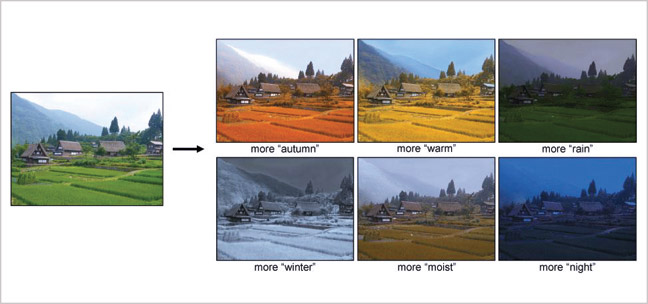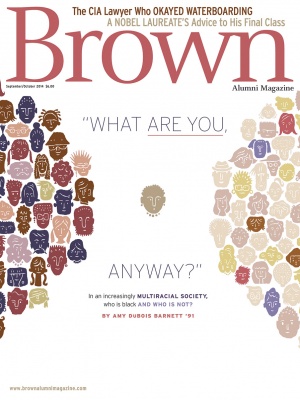It’s one thing to get rid of red-eye in a photo or change it from color to black and white. But what if you could easily change the weather?

It’s true that such software as Adobe Photoshop will let you make the myriad alterations to color and contrast that occur when the sky goes from sunny to cloudy. But Photoshop is complicated, not an easy tool to learn to use.
James Hays, Manning Assistant Professor of Computer Science at Brown, thought he could make the task simpler to accomplish. So simple, in fact, that the user could type “snowy” or “gloomy” and the photo would be transformed.
“It’s been a long-standing interest of mine to make image editing easier for nonexperts,” Hays says. “Programs like Photoshop are really powerful, but you basically need to be an artist to use them.”
The software he developed lets users edit photos according to commonly changing outdoor attributes—cloudy, sunny, rainy, foggy, gloomy, bright, sentimental, mysterious, calm, and more than thirty others. He previewed his algorithm at SIGGRAPH, the world’s premier computer graphics conference, in mid-August.
Hays and his fellow researchers compiled a database of thousands of photos taken by 101 stationary webcams around the world. The cameras snapped the same scenes at different times of day and in different seasons and weathers.
The images were then fed into a computer, which learned to associate color patterns with specific changes in the climate. The algorithm was so precise that the computer knew how hundreds of different aspects of a photo needed to be changed to portray a given weather condition. Rainy, for example, meant making the sky grayer and flatter and the ground shinier.
The results are pretty convincing. In a lab study, the researchers asked participants to rate the manipulated photos on how well they expressed certain weather conditions. The participants preferred the computer-generated results around 70 percent of the time compared to photos edited by traditional software programs.





